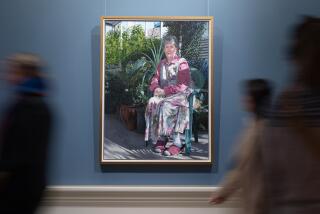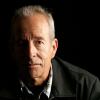History sings as Caitriona O’Leary reclaims ‘The Wexford Carols’
For the vast majority of holiday albums that surface at this time of year, it often seems the biggest artistic choices involved are whether the featured artist sings “Rudolph the Red-Nosed Reindeer” or “Jingle Bells.”
Irish singer Caitríona (pronounced Katrina) O’Leary digs considerably deeper than that with her just-released “The Wexford Carols,” an album that features guest singers Tom Jones, Rosanne Cash and Rhiannon Giddens, all under the guidance of respected Americana producer-songwriter Joe Henry.
For anyone who doesn’t live in County Wexford in Ireland, the album will be an introduction to songs that take on deep-reaching themes, most of which were written more than three centuries ago and largely lost to the modern world.
“I was fascinated by the idea of these so-called lost songs,” O’Leary said from her home in Dublin. “These carols, the words were written down, but the tunes are out there somewhere. They weren’t written down, and they fell out of use.”
“The Wexford Carols” date to a dark time in Ireland’s history in the aftermath of the country’s invasion by English leader Oliver Cromwell and his army. Much of the country’s Irish Catholic population was decimated.
In the decades that followed, two members of the Catholic clergy — Luke Waddinge, bishop of Ferns in County Wexford, and Father William Devereux — published collections of songs they wrote to offer solace to Catholics who had lost their families, homes and livelihoods.
The only song on the album that’s widely performed and recorded outside Ireland is “The Enniscorthy Carol,” also often titled “The Wexford Carol.” It’s the newest of the songs on O’Leary’s album and isn’t part of the two collections that Waddinge and Devereux created.
O’Leary first heard the body of music a little more than 20 years ago on “The Darkest Midnight,” an album by Irish singer Nóirín Ní Riain. A couple of those songs are on O’Leary’s album in new versions — the title track from Riain’s album and “Song for a New Year’s Day” — but for the most part, she scouted out songs still being sung in County Wexford.
O’Leary’s husband, historian Eric Fraad, contributed a liner notes essay on “The Wexford Carols,” and he encouraged her to reach beyond the Irish traditional music community to further spread the word about the music she was trying to resurrect. She enlisted Henry to produce the album.
“I’m such a lover of music from that part of the world,” said Henry, noting that he has Irish lineage in the distant past on his father’s side of his family. As much has he has previously explored the roots of American music in many of its forms, “I had not heard these songs before. I knew they were from a larger canon, but it was one I had not immersed myself in.”
Henry, who lives in South Pasadena, invited Jones, Cash and Carolina Chocolate Drops singer Rhiannon Giddens to be part of the recording sessions, and contributed vocals on some numbers. He described it as a profound honor to work with revered Irish bouzouki player Donal Lunny, who helped O’Leary and Henry arrange the songs.
“I’m a Celt,” Henry said. “That’s where I come from, and this was deeply resonant, incredibly soulful music to me. Our culture has drawn a very narrow concept around what is holiday music and what that might encompass. The fact that this music was particular to the season. ... I found that fascinating.”
“This is just like what we do in the Chocolate Drops: finding obscure music and bringing it to new audiences,” Giddens said in a separate interview. “There’s a freedom in doing this kind of music, because there are not recordings to listen to, so you have to use your own imagination. I feel like that’s what we’re here to do: rescuing this old music.”
As Fraad’s essay notes, the Wexford Carols come with a subtext that runs beyond typical holiday sentiments.
“During the penal times,” Fraad writes, “Catholics were considered heretics by the authorities and often suspected of treason and other crimes. …While Waddinge and Devereux’s carols were meant as a celebration of Christmas and a spiritual palliative for their parishioners and friends, they also feature overt political content.
“As double meanings must have been an aspect of discourse, it seems possible that Waddinge and Devereux deliberately, though subtly, implied connections between the Christmas story and the plight of their parishioners and countrymen.”
“These songs,” O’Leary said, “they’re not sentimental. They are raw, and they contain this really old, medieval, folk, small-world view of the world and the cosmos. I find it so appealing because it’s not touched by 19th century sentimentality. For me, the challenge has been to find a way to communicate my extremely odd taste in music. So this is me being unsentimental.”
O’Leary spent considerable time tracking down melodies that Waddinge cited for use with these poems; Devereux often didn’t indicate what music should accompany his lyrics. Yet she also was intent on bringing something fresh and new to them.
“I have tremendous respect for the songs and for the traditional carolers, the singers who uphold that tradition,” she said. “But if I were just to make a completely pilgrim’s approach and bow down and worship the songs, I’d put a tape recorder in front of the old men singing them.
“To make this record, I felt I had to step back from my complete reverence and put myself into them.”
Time will tell whether the project gains enough notice to support a tour, or at least a few key shows highlighting the rejuvenated carols.
“I’ve been performing them for years and years, whenever I can,” O’Leary said, “but we haven’t taken this show on the road yet. I wouldn’t be sad if the spotlight were shining brightly on these songs again.”
Twitter: @RandyLewis2
More to Read
The biggest entertainment stories
Get our big stories about Hollywood, film, television, music, arts, culture and more right in your inbox as soon as they publish.
You may occasionally receive promotional content from the Los Angeles Times.







